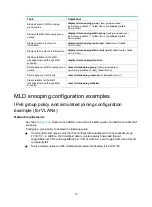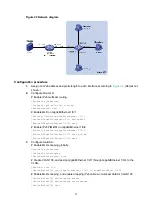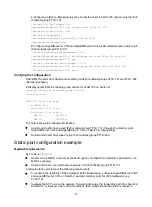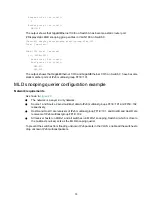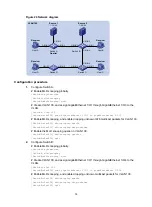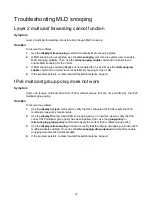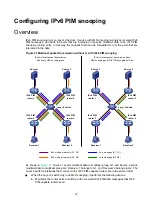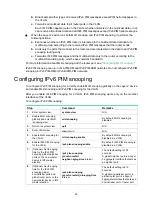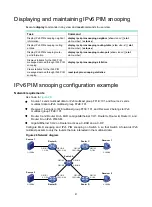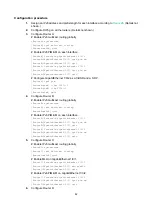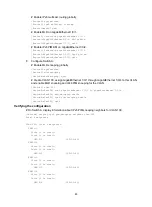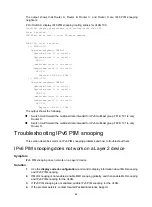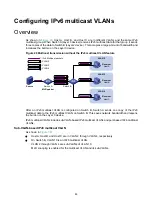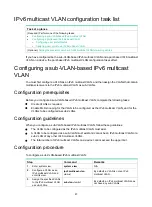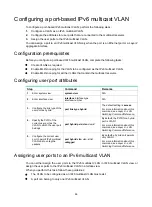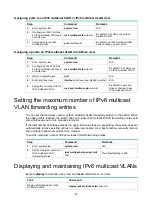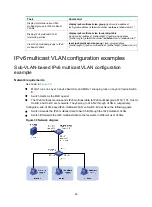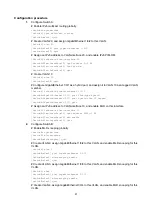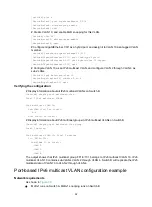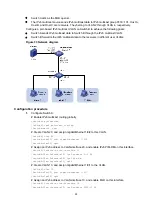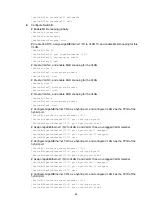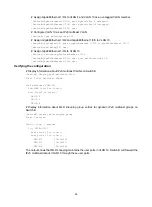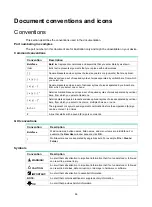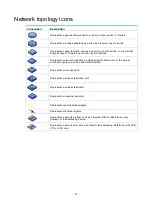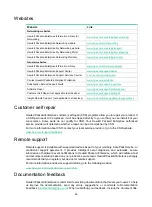
84
The output shows that Router A, Router B, Router C, and Router D are IPv6 PIM snooping
neighbors.
# On Switch A, display IPv6 PIM snooping routing entries for VLAN 100.
[SwitchA] display pim-snooping ipv6 routing-table vlan 100
Total 2 entries.
FSM flag: NI-no info, J-join, PP-prune pending
VLAN 100: Total 2 entries.
(*, FF1E::101)
Upstream neighbor: FE80::1
Upstream Slots (0 in total):
Upstream ports (1 in total):
GE1/0/1
Downstream Slots (0 in total):
Downstream ports (1 in total):
GE1/0/3
Expires: 00:03:01, FSM: J
(*, FF2E::101)
Upstream neighbor: FE80::2
Upstream Slots (0 in total):
Upstream ports (1 in total):
GE1/0/2
Downstream Slots (0 in total):
Downstream ports (1 in total):
GE1/0/4
Expires: 00:03:01, FSM: J
The output shows the following:
•
Switch A will forward the multicast data intended for IPv6 multicast group FF1E::101 to only
Router C.
•
Switch A will forward the multicast data intended for IPv6 multicast group FF2E::101 to only
Router D.
Troubleshooting IPv6 PIM snooping
This section describes common IPv6 PIM snooping problems and how to troubleshoot them.
IPv6 PIM snooping does not work on a Layer 2 device
Symptom
IPv6 PIM snooping does not work on a Layer 2 device.
Solution
1.
Use the
display current-configuration
command to display information about MLD snooping
and IPv6 PIM snooping.
2.
If MLD snooping is not enabled, enable MLD snooping globally, and then enable MLD snooping
and IPv6 PIM snooping for the VLAN.
3.
If IPv6 PIM snooping is not enabled, enable IPv6 PIM snooping for the VLAN.
4.
If the problem persists, contact Hewlett Packard Enterprise Support.

